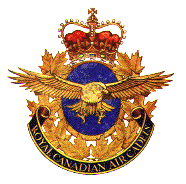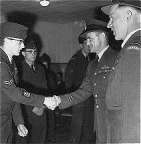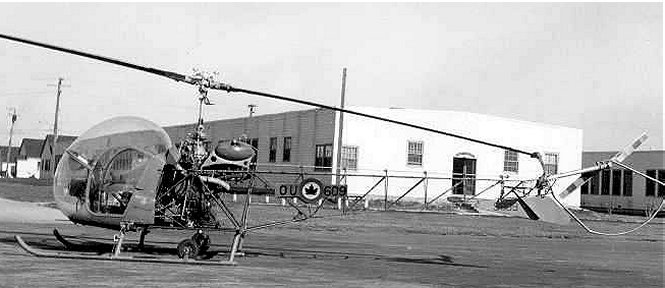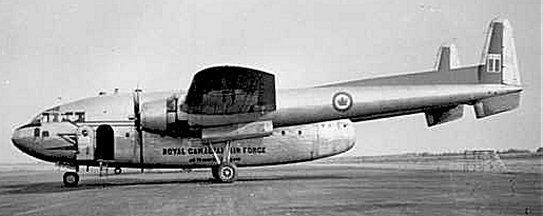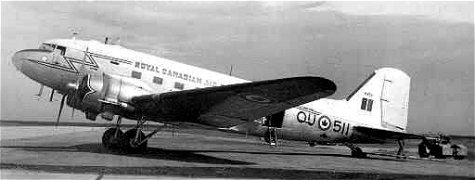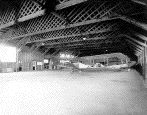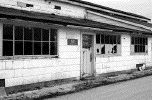CFB BORDEN, Ont. - The birthplace of the Royal
Canadian Air Force, a string of distinctive aircraft hangars built during
the First World War to train pilots for the Western Front, is on the verge
of collapse due to age and neglect.
When the line of identical aircraft hangars at Canadian
Forces Base Borden, hurriedly constructed in 1917, was named a National
Historic Site in 1989, 11 of the original 17 remained standing. Since that
prestigious designation from the federal government, three have been demolished
because money was unavailable for repairs.
At least four more are in imminent danger. One has already
been condemned. The roof sags and water from the last rainfall pools on
the floor. Declared a biohazard because of toxic mould creeping from the
walls and floorboards, it has a red warning sign on its door: "Danger:
Do not enter without respirator protection."
"We don't think they'll survive another winter," said
Master Warrant Officer Normand Marion, deputy heritage officer for 16 Wing,
the air training unit at Borden. "The situation is critical," said Colonel
Peter Abbott, 16 Wing commander. "There are certain things that need to
be done immediately or gravity threatens to bring them down."
A group of officers is making an unusual ultimatum to
the federal government: Come up with the $6.7-million to save the site
or enough money to tear it down. "We shouldn't allow the hangars to fall
through some benign neglect. There is a responsibility for people to be
aware of what is happening," Col. Abbott said.
Colonel G. M. Mahon, base commander of Borden, has written
to Department of National Defence headquarters seeking an answer. "Arguably,
this decision is binary and the development of middle options only delays
a decision," says Col. Mahon's letter, obtained by the National Post. "Either
the hangars that are surplus ... be preserved for heritage purposes or
permission be sought to demolish the buildings for both safety and cost-saving
reasons."
As perhaps befits military buildings, the soldiers want
the hangars to live in glory or die in battle.
* * * * *
Standing alongside the airstrip at Borden, Col. Abbott
bends to grip the stalk of one of the innumerable knee-high weeds reaching
up from deep cracks in the asphalt. Despite the application of considerable
muscle, the plant refuses to budge. No matter. Removing it would make little
difference; the weeds claimed his airfield a decade ago.
Now, he fears, nature will also take away his hangars.
At Col. Abbott's back, as he faces the eight remaining
wooden buildings of the old hangar line, is a sweeping vista that ends
only when the sandy plains meet the distant slopes of the Niagara Escarpment.
It is an unobstructed view that remains unchanged from
April 4, 1917, when the first group of Royal Flying Corps recruits gathered
for their first day of training. Borden is 80 kilometres northwest of Toronto.
Covering 85 square kilometres, it was cut from the wilderness during the
First World War to train army recruits before sending them to the battlefields
of France and Flanders, where both sides were bogged down in a vicious
and costly war of attrition.
Air power was seen as a way to break the deadlock and
Britain looked to Canada for help. Our government offered an airstrip,
training and a roster of young men willing to be made into pilots. Borden
was an ideal spot, offering plenty of space and skies far from enemy aircraft.
On Feb. 2, 1917, construction began on what was called Borden's "aerodrome."
Within months, 15 hangars, along with repair shops, stores,
a hospital, messes and staff quarters, had been built, said Major Jean-Maurice
Pigeon, heritage officer for 16 Wing. Two more hangars were added later.
Each identical hangar looked simple from the outside -- measuring 120 feet
long and 66 feet wide with straight walls and a bow-shaped roof. At the
ends were large sliding doors allowing easy access for the 10 Curtiss JN-4
biplanes that
each housed.
Inside, however, they were an architectural marvel. Long
timber posts, supported by diagonal beams, held aloft the intricate wooden
lattices that formed the roof trusses. The trick was to keep such a large
roof up without supporting columns that would rip the wings from any aircraft
being wheeled in or out. The hangars were built end-to-end, equally spaced
in a long, lazy S-shape beside the runway, creating the "hangar line."
In 1917, Lieutenant-Colonel Cuthbert Gurney Hoare, who
headed the air training effort, wrote to his superiors that the hangars
were built as temporary structures in "the cheapest forms of construction
compatible with strength."
That any of them remain is a testament to the sound design
and skill of the builders. Young men arrived in the spring of 1917 to learn
basic airmanship before leaving for Britain.
Just four days after the first day of flight training
at the hangars came Canada's first fatal military flying accident. Cadet
James Harold Talbot died when his plane crashed into one of the repair
shops beside the hangars on April 8, 1917.
By the end of the First World War, Borden had turned out
1,884 pilots, including William Barker, who won the Victoria Cross for
an epic, single-handed battle with some 60 German aircraft. "The hangars
collectively formed the operational centre for the Camp Borden air station.
As such, they were the birthplace of organized military aviation in Canada
and illustrate the evolutionary process that led to the creation of the
Canadian Air Force in 1920, followed in 1924 by the birth of the Royal
Canadian Air Force," says a DND document on the hangar line.
The aerodrome at Borden played a significant role during
the Second World War as well, forming part of the British Commonwealth
Air Training Plan that saw air crews from Australia, New Zealand, Britain
and Canada train at Borden and scores of other bases across Canada. The
success of the program prompted Franklin D. Roosevelt, the U.S. president,
to call Canada the "Aerodrome of Democracy."
With a nod to that legacy, the Historic Sites and Monuments
Board of Canada classified the hangar line a historic site, placing it
on an equal footing with the fortress of Louisbourg, the 18th-century fortified
town in Nova Scotia, and the Citadelle de Québec, the most important
fortification built in Canada under British rule.
"By virtue of both their place in the development of Canadian
military aviation and the fact that they are the earliest known surviving
examples of their functional building type, the eleven former Royal Flying
Corps hangars at CFB Borden, collectively, are of national historic and
architectural significance," says a letter from the historic sites board
in 1989.
But the designation, while prestigious, means little in
real terms. "We do such a poor job in this country of maintaining our history
and our heritage," said William J. Coyle, honorary colonel of the Canadian
Forces
aerospace technology school at Borden. "There are some
really great stories here. If we lose the physical presence of the hangar
line, how do we pass them along to our children and grandchildren without
them being able to come and see and touch and feel them?
"To sit by and watch them literally fall apart is really
soul-destroying." A few of the hangars have been upgraded and converted
to more modern use. Classrooms for the Air Cadets are housed in Hangar
3 and halon fire suppression reserves are stored in Hangar 6.
The smartest of the lot, Hangar 11, is a museum chronicling
the history of the RCAF and displaying restored vintage planes, including
the oldest flying aircraft in Canada. Both Col. Abbott and Mr. Coyle believe
Parks Canada or a private foundation needs to step forward to prevent the
museum from one day being the only reminder of the landmark line.
"We do a good job of training soldiers, sailors and airmen,
but we're not necessarily good at maintaining historic sites," Col. Abbott
said. "As an air force officer, I have some personal feelings on the matter.
But I have to
face the very real possibility that the decision could
be no, the people of Canada do not want to spend the money to save the
hangar line.
"As I've joked to my staff, if the decision comes to tear
them down, I'm not going to chain myself to the front hangar doors." At
that, Mr. Coyle interrupts: "That's my job," he said.
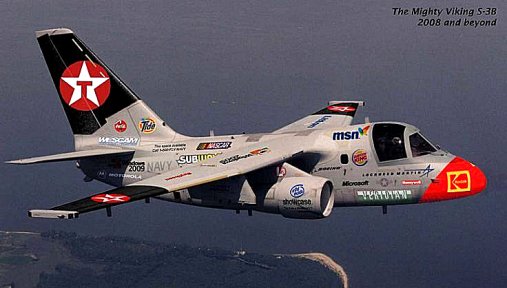
Solution to Canada's military budget problems
EMPLOYEE PERFORMANCE REPORTS
~ ROYAL NAVY
The follow
are actual excerpts taken from "employee performance reports"
of the British Royal Navy and Marine officers.

